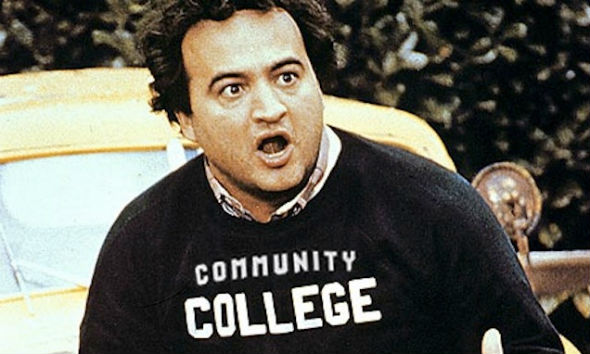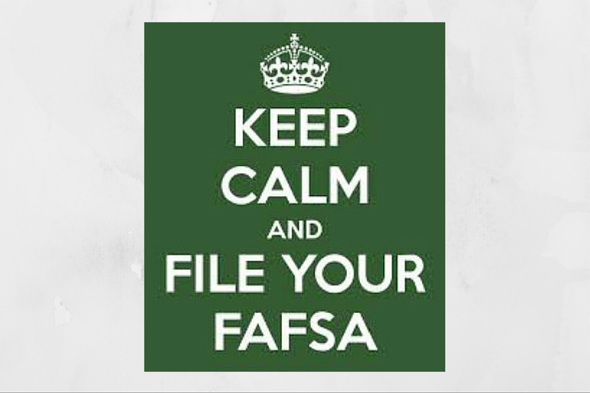{{parent.cta_data.text}}
COMMUNITY

7 ways the 2016 fiscal year budget could affect higher education
http://www.savingforcollege.com/articles/7-ways-the-2016-fiscal-year-budget-could-affect-higher-education-721
Posted: 2015-02-06
Earlier this week, the Obama administration released a 2016 fiscal year budget request, which includes $70.7 billion in discretionary appropriations for the Education Department. As he mentioned in his State of the Union Address, the President intends to make education and job training top priorities this year. The following slideshow lists the impact the proposed budget could have on certain areas of higher education:

1. Free community college
- Americaís College Promise will make the first two years of community college free for responsible students.
- Students must attend school at least half time, maintain a minimum C average, and be making progress toward a degree.
- To participate, colleges must offer course credits toward a four-year degree or occupational training programs that lead to degrees in high demand fields.
- Budget: $1.36 billion in 2016, a $60.3 billion investment over 10 years.
Photo credit: SFGate.com

2. Maximize Pell Grants
- Federal Pell Grants are need-based financial aid awards for low-income students that do not have to be repaid.
- The program helps make college a reality for millions of undergraduate students and students enrolled in certain post-baccalaureate teacher certification programs.
- If approved, the budget will increase the maximum Pell Grants to $5,915 for 2016-17, and continue to tie the maximum award to inflation going forward.
- Budget: $29.7 billion
Photo credit: Can Stock Photo

3. Eliminate FAFSA fears
- Students need to submit a Free Application for Federal Student Aid (FAFSA) in order to qualify for federal student aid.
- The government gives out over $150 billion in aid each year, but around 2 million students missed out in 2011-2012 either because they didnít know how to apply or said the forms were too much work.
- The proposed simplified FAFSA will do away with unnecessary complex questions, making it easy for all families to apply for aid.
Photo credit: Keep Calm-O-Matic

4. Improved income-driven student loan repayment plans
- Income-driven repayment plans are offered through the U.S. Department of Education and include Pay As You Earn, Income-Based Repayment, and Income-Contingent Repayment.
- These plans were intended to help those who have high student loan debt compared to their income.
- The budget will allow more borrowers to cap monthly loan payments at 10 percent of their discretionary income and have any remaining debt discharged after 20 years.
- It would also prevent borrowers from getting taxed when their student loans are discharged.
Photo credit: Someecards.com

5. Maintain funding for TRIO programs
- TRIO programs are federal outreach and student services programs that serve and assist low-income, first generation college and disabled students from sixth grade to college graduation.
- The programs aim to provide access to education including academic tutoring, personal counseling, mentoring and financial guidance.
- Grants are awarded to higher education institutions, agencies, and organizations that serve disadvantaged youth and secondary schools.
- Budget: $860 million, a $20 million increase
Photo credit: Can Stock Photo

6. More First in the World (FITW) awards
- Last May, the FITW grant competition was launched to help colleges develop and evaluate new approaches that can expand college access and improve student learning while reducing costs.
- Colleges can apply for grants for projects that support at least one of these priorities: increase college access and completion, increase community college transfer rates, increase STEM enrollment and completion, or reduce time to completion.
- Last year almost 500 applications were submitted and projects from 24 colleges and universities were selected.
- Budget: $200 million
Photo credit: Can Stock Photo

7. New American Technical Training Fund
- The American Technical Training Fund is a joint effort with the Department of Labor that would expand and improve technical training programs.
- The fund would support up to 100 programs designed to help low-wage workers gain skills they need to advance in high-demand sectors such as energy, information technology and advanced manufacturing.
- It will focus on programs that have strong employer partnerships, are structured to accommodate part-time work, and provide work-based learning and accelerated training opportunities.
- Budget: $200 million
Photo credit: Can Stock Photo
Earlier this week, the Obama administration released a 2016 fiscal year budget request, which includes $70.7 billion in discretionary appropriations for the Education Department. As he mentioned in his State of the Union Address, the President intends to make education and job training top priorities this year. The following slideshow lists the impact the proposed budget could have on certain areas of higher education:

1. Free community college
- Americaís College Promise will make the first two years of community college free for responsible students.
- Students must attend school at least half time, maintain a minimum C average, and be making progress toward a degree.
- To participate, colleges must offer course credits toward a four-year degree or occupational training programs that lead to degrees in high demand fields.
- Budget: $1.36 billion in 2016, a $60.3 billion investment over 10 years.
Photo credit: SFGate.com

2. Maximize Pell Grants
- Federal Pell Grants are need-based financial aid awards for low-income students that do not have to be repaid.
- The program helps make college a reality for millions of undergraduate students and students enrolled in certain post-baccalaureate teacher certification programs.
- If approved, the budget will increase the maximum Pell Grants to $5,915 for 2016-17, and continue to tie the maximum award to inflation going forward.
- Budget: $29.7 billion
Photo credit: Can Stock Photo

3. Eliminate FAFSA fears
- Students need to submit a Free Application for Federal Student Aid (FAFSA) in order to qualify for federal student aid.
- The government gives out over $150 billion in aid each year, but around 2 million students missed out in 2011-2012 either because they didnít know how to apply or said the forms were too much work.
- The proposed simplified FAFSA will do away with unnecessary complex questions, making it easy for all families to apply for aid.
Photo credit: Keep Calm-O-Matic

4. Improved income-driven student loan repayment plans
- Income-driven repayment plans are offered through the U.S. Department of Education and include Pay As You Earn, Income-Based Repayment, and Income-Contingent Repayment.
- These plans were intended to help those who have high student loan debt compared to their income.
- The budget will allow more borrowers to cap monthly loan payments at 10 percent of their discretionary income and have any remaining debt discharged after 20 years.
- It would also prevent borrowers from getting taxed when their student loans are discharged.
Photo credit: Someecards.com

5. Maintain funding for TRIO programs
- TRIO programs are federal outreach and student services programs that serve and assist low-income, first generation college and disabled students from sixth grade to college graduation.
- The programs aim to provide access to education including academic tutoring, personal counseling, mentoring and financial guidance.
- Grants are awarded to higher education institutions, agencies, and organizations that serve disadvantaged youth and secondary schools.
- Budget: $860 million, a $20 million increase
Photo credit: Can Stock Photo

6. More First in the World (FITW) awards
- Last May, the FITW grant competition was launched to help colleges develop and evaluate new approaches that can expand college access and improve student learning while reducing costs.
- Colleges can apply for grants for projects that support at least one of these priorities: increase college access and completion, increase community college transfer rates, increase STEM enrollment and completion, or reduce time to completion.
- Last year almost 500 applications were submitted and projects from 24 colleges and universities were selected.
- Budget: $200 million
Photo credit: Can Stock Photo

7. New American Technical Training Fund
- The American Technical Training Fund is a joint effort with the Department of Labor that would expand and improve technical training programs.
- The fund would support up to 100 programs designed to help low-wage workers gain skills they need to advance in high-demand sectors such as energy, information technology and advanced manufacturing.
- It will focus on programs that have strong employer partnerships, are structured to accommodate part-time work, and provide work-based learning and accelerated training opportunities.
- Budget: $200 million
Photo credit: Can Stock Photo
If you liked this post and think it would help others save for college, please share!
Recommended Articles
SPONSOR CONTENT
Financial Professionals
Top 529 College Savings Plans
One-year rankings are based on a plan's average investment returns over the last 12 months.
| State | Plan Name | |
|---|---|---|
| 1 | Nevada | USAA 529 Education Savings Plan |
| 2 | Florida | Florida 529 Savings Plan |
| 3 | New Jersey | NJBEST 529 College Savings Plan |
Three-year rankings are based on a plan's average annual investment returns over the last three years.
| State | Plan Name | |
|---|---|---|
| 1 | South Dakota | CollegeAccess 529 (Direct-sold) |
| 2 | Wisconsin | Edvest 529 |
| 3 | Nevada | USAA 529 Education Savings Plan |
Five-year rankings are based on a plan's average annual investment returns over the last five years
| State | Plan Name | |
|---|---|---|
| 1 | Indiana | CollegeChoice 529 Direct Savings Plan |
| 2 | Florida | Florida 529 Savings Plan |
| 3 | Alaska | T. Rowe Price College Savings Plan |
10-year rankings are based on a plan's average annual investment returns over the last ten years.
| State | Plan Name | |
|---|---|---|
| 1 | West Virginia | SMART529 WV Direct College Savings Plan |
| 2 | South Carolina | Future Scholar 529 College Savings Plan (Direct-sold) |
| 3 | Ohio | Ohio's 529 Plan, CollegeAdvantage |

 {{parent.title}}
{{parent.title}}
 Login
Login

